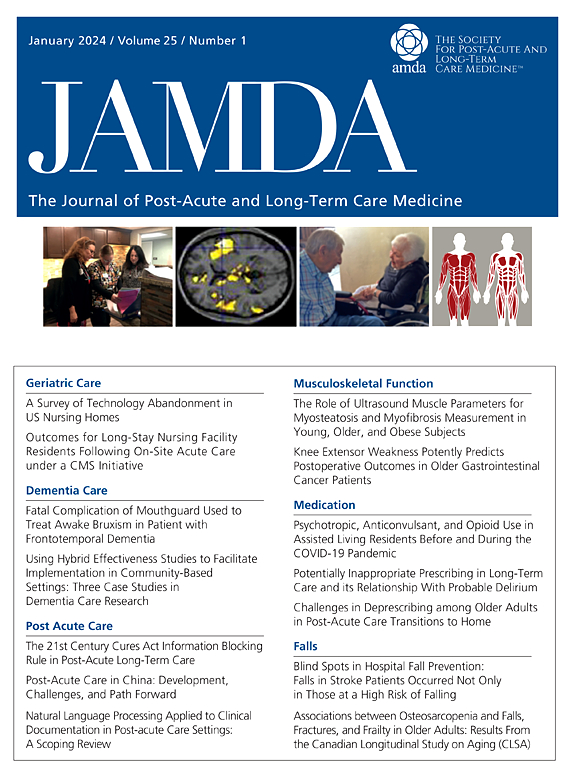Disparities in Infection Risk Among Home Health Care Patients: A Study Using Area Deprivation Index
IF 4.2
2区 医学
Q2 GERIATRICS & GERONTOLOGY
Journal of the American Medical Directors Association
Pub Date : 2025-02-18
DOI:10.1016/j.jamda.2024.105455
引用次数: 0
Abstract
Objective
To examine the association between neighborhood deprivation and infection-related hospitalizations among home health care (HHC) patients across different rurality levels.
Design
Retrospective observation analysis of 2019 national data sets, including Medicare data linked to 2019 Area Deprivation Index (ADI) data and Rural-Urban Continuum Codes (RUCCs).
Setting and Participants
The sample includes 3,656,810 HHC patients from 8135 HHC agencies nationwide. Patients were predominantly White (77.6%), with an average age of 80 years, and mostly female (61.7%). The sample included 24% dual-eligible patients and those living in large metropolitan (53.8%), small metro (30.2%), rural adjacent (11.4%), and remote rural areas (4.6%).
Methods
Hospital admissions due to infection were identified through International Classification of Diseases, Tenth Revision (ICD-10), codes. Neighborhood deprivation was measured by the 2019 ADI. Patients were stratified by RUCC (large metro, small metro, rural adjacent, or remote rural). Within each rurality stratum, ADI quartiles were constructed, with higher quartiles indicating greater neighborhood deprivation. Multivariable logistic regression was conducted, adjusting for multiple-level variables.
Results
As neighborhood deprivation increased, there was a rise in the proportion of dual-eligible, female, Black, and Hispanic patients, whereas the proportion of White patients decreased, especially in rural areas. Rural areas with higher ADI rankings showed lower quality metrics and reduced health care resources. Higher ADI quartiles were significantly associated with increased infection risks after adjusting for covariates, but this was only observed in remote rural areas, not in urban areas.
Conclusions and Implications
The findings highlight significant policy and clinical implications for remote rural areas. Policymakers should increase investments in rural health infrastructure, enhance telehealth, improve transportation services, and offer incentives for health care providers to practice in these areas. The nonsignificant association between neighborhood deprivation and infection outcomes in metropolitan areas may stem from the ADI's limited sensitivity to urban contexts, highlighting the need for more nuanced indices that better capture urban socioeconomic challenges.
求助全文
约1分钟内获得全文
求助全文
来源期刊
CiteScore
11.10
自引率
6.60%
发文量
472
审稿时长
44 days
期刊介绍:
JAMDA, the official journal of AMDA - The Society for Post-Acute and Long-Term Care Medicine, is a leading peer-reviewed publication that offers practical information and research geared towards healthcare professionals in the post-acute and long-term care fields. It is also a valuable resource for policy-makers, organizational leaders, educators, and advocates.
The journal provides essential information for various healthcare professionals such as medical directors, attending physicians, nurses, consultant pharmacists, geriatric psychiatrists, nurse practitioners, physician assistants, physical and occupational therapists, social workers, and others involved in providing, overseeing, and promoting quality

 求助内容:
求助内容: 应助结果提醒方式:
应助结果提醒方式:


